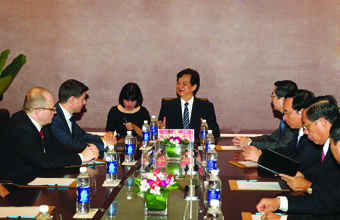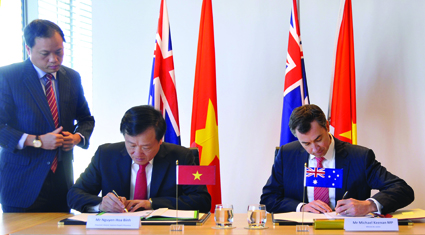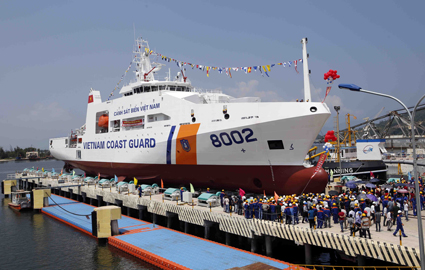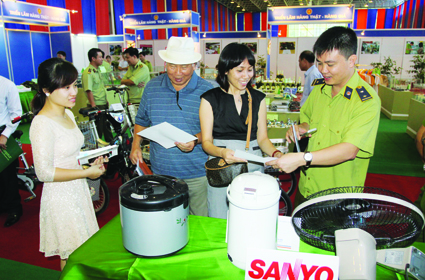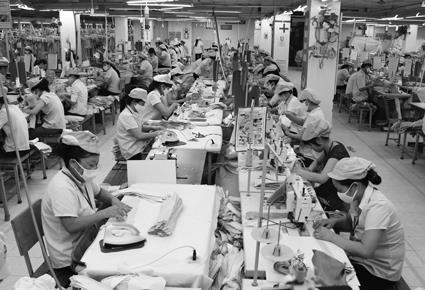Truong-Minh Vu[1]
This year marks a two-decade anniversary of the U.S.-Vietnam diplomatic relationship. In retrospect, it is a long way between the two nations which used to be former foes in a bloody war that claimed more than fifty-eight thousand American soldiers and more than two million Vietnamese lives from both the North and South Vietnam to fix the wounds. For pessimists, Vietnam and the U.S. have missed multiple opportunities to elevate their relationship to a new level. For optimists, the two countries have made lots of achievements in bilateral trade and confidence building measures. They have grounds to believe that. In 2014, the U.S. for the first time, overtook the EU to become Vietnam’s biggest export market. Vietnam exported 28.5 billion dollars to the U.S. in 2014, an approximately 20% year-on-year increase meanwhile.
Vietnam is crucial to the U.S. simply because of its strategic position right next to a rising China, overlooking the South China Sea. Numerous analysts and pundits have talked about Vietnam’s geostrategic location that draws attention from Obama administration to help check a rising China but Brantly Womack, a China and Vietnam expert from the University of Virginia, argues that American policy towards Vietnam is largely driven by bilateral interests or global concerns rather than by triangulation. Womack also refutes the idea that Vietnamese sensitivity to Chinese infringement makes Vietnam the potential best candidate for standing up to China in the region. In the same vein, high-ranking officials from both Vietnam and the U.S. have also repeatedly played down the China factor in boosting their bilateral relationship. It is understandable that Vietnam does not want to improve the relationship with the U.S. at the expense of China. The U.S., of course, does not want to put Vietnam in an awkward situation that the latter has to choose either.
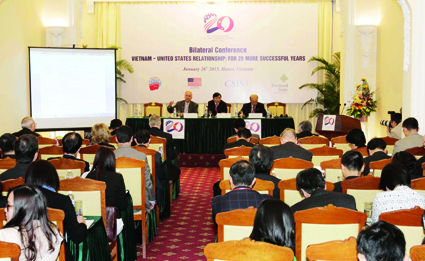 |
A view from Conference entitled “Vietnam - United States relationship: For 20 more successful years” __Photo: Phuong Hoa /VNA |
Even though both sides avoid talking about the China factor, it is self-evident that a shared strategic concern for Chinese assertiveness in the Asia Pacific is the major driver for two countries to set up closer ties. By the virtue of history, Vietnam is, in many aspects, so similar to a rising powerful China. Ernst Bower, a senior Southeast Asia analyst at the Center for Strategic and International Studies argues in a press report that, “Washington sees Vietnam as the most strategic thinking of all the ASEAN countries.”
As early as the 1950s, the U.S. recognized the importance of Vietnam as a bulwark against Chinese communism. Consecutive American administrations helped set up a pseudo-democratic regime in South Vietnam, but it was faltering without prospects until 1975. Now the U.S. is coming back to a unified Vietnam with prudent gestures and modest targets, aiming at a slow but effective cooperation. In 1995, then American President Bill Clinton decided to normalize diplomatic ties with Vietnam. Six years later, the Bilateral Trade Agreement (BTA) was signed in 2001. The two-way trade has picked up in Vietnam’s favor since that landmark.
In 2013, Vietnamese President Truong Tan Sang and his American counterpart Barack Obama inked the Comprehensive Partnership, marking a new relationship level between two former foes. After multiple lobbying activities and concessions from both sides, the U.S. recent partial rescinding of the weapons sale ban in October 2014, which the Chinese Communist Party’s People’s Daily called an interfering and destabilizing action to the balance of power in the region, was a sanguine signal for the increasing mutual trust that both nations are building. The partial lifting itself does not carry a dramatic shift in bilateral military relations, but it is a stepping stone for further ties and confidence-building measures.
After the events of the Haiyang Shiyou-981 oil rig, Vietnamese strategists have realized that it is difficult to attach territory conflicts to maritime freedom, the latter of which has gained obvious concern from the U.S. Therefore, with neither an alliance nor military support, Vietnam will be badly hurt in physically confronting China over Paracel islands. A slow but steady move to the U.S. military cooperation is hardly inevitable. In April 2014, two U.S. navy ships had the fifth annual six-days of joint non-combat exercises with the Vietnamese navy, symbolizing a closer defense cooperation between the two former adversaries. However non-combatant, these exercises forge the basis for building mutual trust and understanding between the U.S. and Vietnam, hopefully catering to each other’s priorities. For instance, during his trip to Vietnam last December, U.S. Secretary of State John Kerry announced that the Vietnamese Coast Guard would receive USD 18 million in aid with five fast patrol-boats to enhance its maritime police capacity.
Against the backdrop that Russia is Vietnam’s largest weapons supplier and most of what Vietnam is possessing are also in China’s inventory, Vietnam attempts to diversify its arsenal by fixing and upgrading U.S.-made military hardware and armaments that it got from the South Vietnamese army after the war ended in 1975. These weapons were indeed repaired, modified and put into use into the Third Indochinese War in the 1980s. Some still play an important role in Vietnam’s armament. For instance, approximately 80 M113 armored personnel carriers are reported to be operational in Vietnam’s army. The number was much higher right after 1975, approximately 500 vehicles. The reparation and upgrading of M113s were made possible with spare parts obtained from informal channels, which are not of course reliable for long-term use.
Other hardware weapons in need of replacement are helicopters and military aircraft UH-1, CH-47, and C-130 Hercules. Vietnam does not only have problems with U.S.-made weapons, but there are also some alarming calls for Soviet-manufactured helicopters, which have been constantly put into operation for more than five decades. A series of military helicopter crashes have been reported recently, raising angst among the public about military safety. An Mi-171 helicopter crashed down on July 7, 2014, in Hoa Lac, a suburb of Hanoi claiming 21 casualties. On January 1, 2015, a UH-1 helicopter dived down to the ground in Ho Chi Minh City, killing four military personnel on board. On March 26, 2015, an Mi-8 chopper got problems while landing on Phu Quy island off coast of Binh Thuan province with three wounded soldiers. Hence, the atrial ease of lethal arms sale came in time, but Vietnam is expecting more than that. A broad arms sale will help the U.S. win more Vietnamese friends; especially those in the government cabinet who still embrace lingering doubts of U.S. intentions towards Vietnam’s stance in the South China Sea. These concrete steps bode well for building a future defense cooperation.
Despite this recent breakthrough, U.S. lethal weapons are unlikely to be a game-changer in the SCS balance of power in particular, and in Sino-Vietnamese-U.S. trilateral relations in general. Even a complete lifting of the U.S. weapons embargo on Vietnam would not transform the balance of power between China and Vietnam in any significant way. The Chinese People’s Liberation Army Navy will still massively outnumber its Vietnamese counterpart. The Chinese fleet is also more modern and better equipped. Since U.S. weapons are very expensive, Hanoi could not realistically afford enough of them to meaningfully alter its current military structure in order to effectively deter a Chinese threat. Even in a scenario where Vietnam could afford significant quantities of U.S. arms, it would take years for the People’s Army of Vietnam to integrate U.S. weapons into its system, which has been dominated by Russian weapons for decades.
Throughout its four-thousand-year history, Vietnam has always lived under the fear of Chinese invasion. Interestingly, it has oscillated between a policy of acquiescence and hardline resistance to ensure security vis-a-vis China. In any case, China has been and will always be Vietnam’s top security concern because, as Vietnamese Prime Minister Nguyen Tan Dung recently said, “It doesn’t matter what happens, China will always be Vietnam’s neighbor.” Although both the Philippines and Vietnam are currently engaged in a territorial struggle with China over islands in the South China Sea, Vietnam faces two distinct disadvantages compared to the Philippines. Unlike the Philippines, Vietnam is in conflict with China in both the Paracel and Spratly islands. While the Spratly islands involve many other Southeast Asian nations and directly affect regional maritime freedom, disputes over Paracels remain merely a bilateral issue between Vietnam and China. Second, the long-time “Three No’s” - Vietnam’s non-alliance policy - are also a controversial issue. This policy has long insisted on three principles that are deemed unchangeable: no military alliances, no allowance for any country to set up military bases on Vietnamese territory, and no reliance on any countries for help in combating other countries.
Therefore, if China plays its hand deftly and at least avoids a high-profile clash with Vietnam, there are strong reasons to believe that a formal U.S.-Vietnam treaty alliance will remain a distant prospect. After all, China is the second largest trading partner of the U.S. and the U.S. is not interested in risking a war with a major nuclear power. However, this does not mean that the U.S. will watch China bully smaller neighbors either. What we could expect is some form of “soft alliance” directly between Vietnam and the U.S. or Vietnam and Japan with the U.S. backing them up to counter China’s increasing assertiveness.-
[1] Truong-Minh Vu (PhD) is the Director of the Center for International Studies, University of Social Sciences and Humanities, Ho Chi Minh City.

